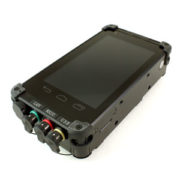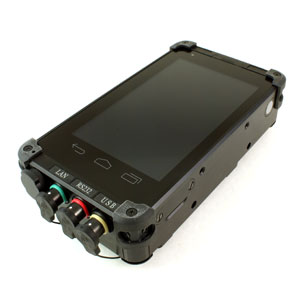As discussed in Ten ways mobile business solutions succeed and fail, integrating mobility into an enterprise’s communication network can be a tricky affair. Many businesses hand out smartphones to their employees, and expect wonderful benefits to just automatically roll in. A more thought-out strategy usually yields better results.
Recently, I heard a case study in which an enterprise had a mobile strategy that not only wasn’t working, but also was negatively impacting their bottom line. How they successfully transformed their communication network from a minus to a plus says a lot about the use of mobile devices in enterprise solutions.
The problem
A well-established Oil & Gas company had been using paper forms to collect and tabulate field data. This meant that:
- Paper forms had to be filled out by hand in the field under less than ideal conditions.
- The forms had to be transported by vehicle to the main office, often hours away.
- Information in the form had to be reentered into a digital format at the office.
Transportation of forms and copying data took a great deal of time and man-hours. In fact, Canvas, a cloud-based software service and mobile app platform, estimates that for each individual paper-based form used, the company suffered an additional expense of $50,000 per year in costs associated with printing, shipping, data entry, filing, storage and mandatory destruction.
There were other problems besides. Customers were unable to receive critical information in real-time. Managers had to delay crucial decisions. Important photographs sometimes became separated from reports. Paper reports were lost, damaged, or even stolen while in transit or in the field.
The company decided to use smartphones to collect field data electronically. By transitioning away from paper forms, it was hoped that the company could save time and money.
Unfortunately, when remote workers initially used their smartphones, the results were less than ideal. Not all oil rigs and remote locations have Wi-Fi-and cellular coverage. This led field workers to believe that they could not completely end their reliance on paper forms.
The company’s original mobile strategy was to communicate data through text messages. Text messages were often copied from paper forms which were then sent to the main office, where the text messages were reentered into a database. This copying and recopying significantly increased the chances of error. Furthermore, the words in the texts were often abbreviated or misspelled, which made the data entry even more challenging.
The biggest single problem was that every text was sent as a group message. When workers returned from the field, they would have to scroll through hundreds of texts to find the one they wanted. Reports to clients and internal stakeholders were delayed by hours or even days.
The solution
Canvas worked with this Oil & Gas company to implement a successful mobile strategy. Their solution featured digital forms that worked both off-line and on-line. This allowed workers to fill out forms on their smartphones while in the field, no matter what the coverage was. No more paper forms.
Migrating paper forms to the cloud (and local platforms) turned out to have a number of significant advantages, other than the obvious one of saving man-hours. Quality improved, because the forms used drop-down menus with fully written, correctly spelled words, rather than the previously utilized shortened text messages. Standardizing the data made analysis and sharing much easier. Clients were informed of the status of field locations in real time. People within the company got a searchable database which was linked to inventory control, catalogs, and other information management systems. In addition, time/GPS stamped photos and electronic signatures were easily linked to the forms.
Canvas specializes in this sort of form migration. They offered their client a choice of using user-friendly, web-based, build-your-own-app solutions, or simply buying one of the thousands of readymade apps that populate their store. They shepherded their client through the process in a matter of just a few weeks. What I found most remarkable is that they were able to implement this solution with virtually no IT support.
Fixing a poorly conceived solution is often harder than implementing an appropriate one in the first place. The fact that Canvas was able to do so in a short period of time with comparatively little resources speaks well of the flexibility and efficiency of their migration services.
Any cloud-based solution that is used in a challenging environment works better on a rugged, reliable platform. AMREL and Canvas have teamed up to offer new, innovative solutions for business’ information management needs. Use our lightweight fully rugged tablets for remote evaluations, inspections, data collection, reporting, dispatching, invoicing and estimation. To watch a video about Canvas solutions, click here.
To learn how an AMREL Rugged Tablet/Canvas cloud-based solution can help your enterprise, contact Linda Talcott at (800) 882-6735 or lindat@amrel.com.
















